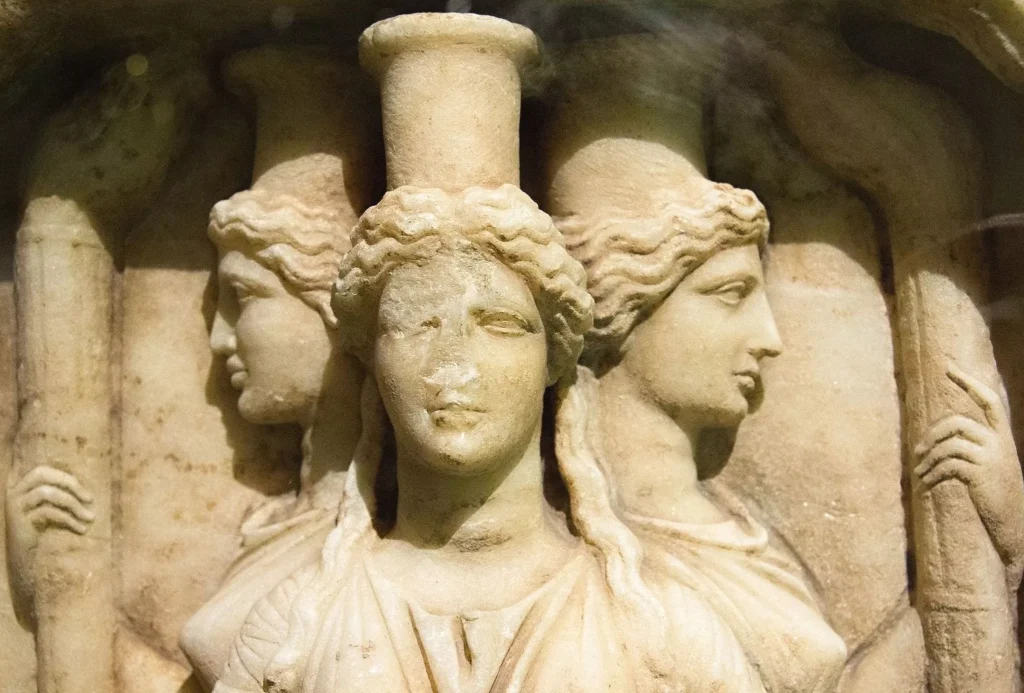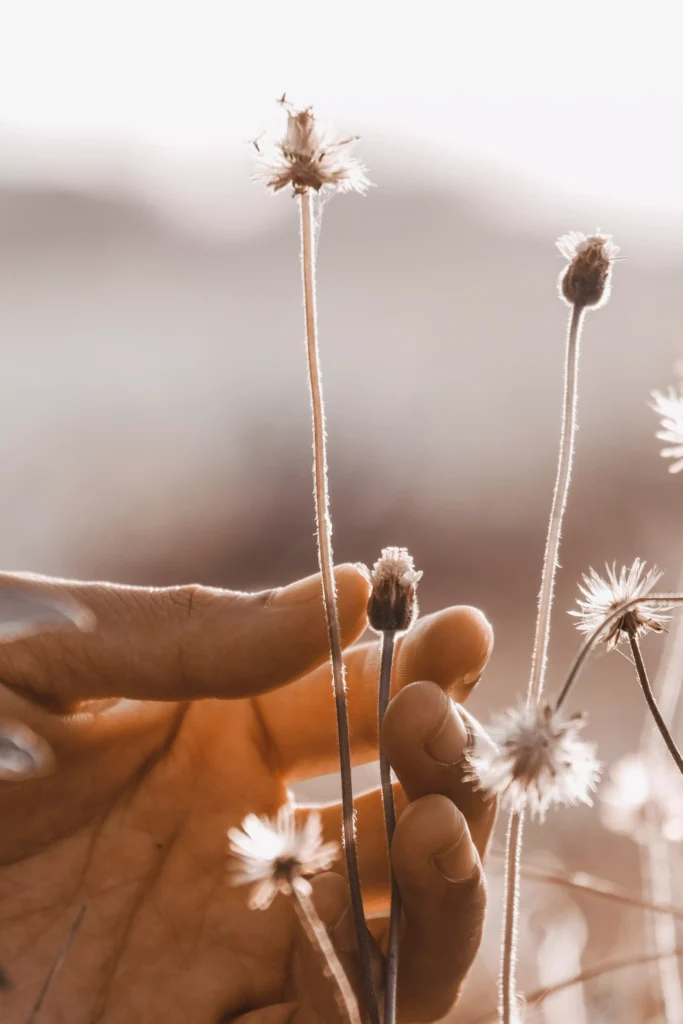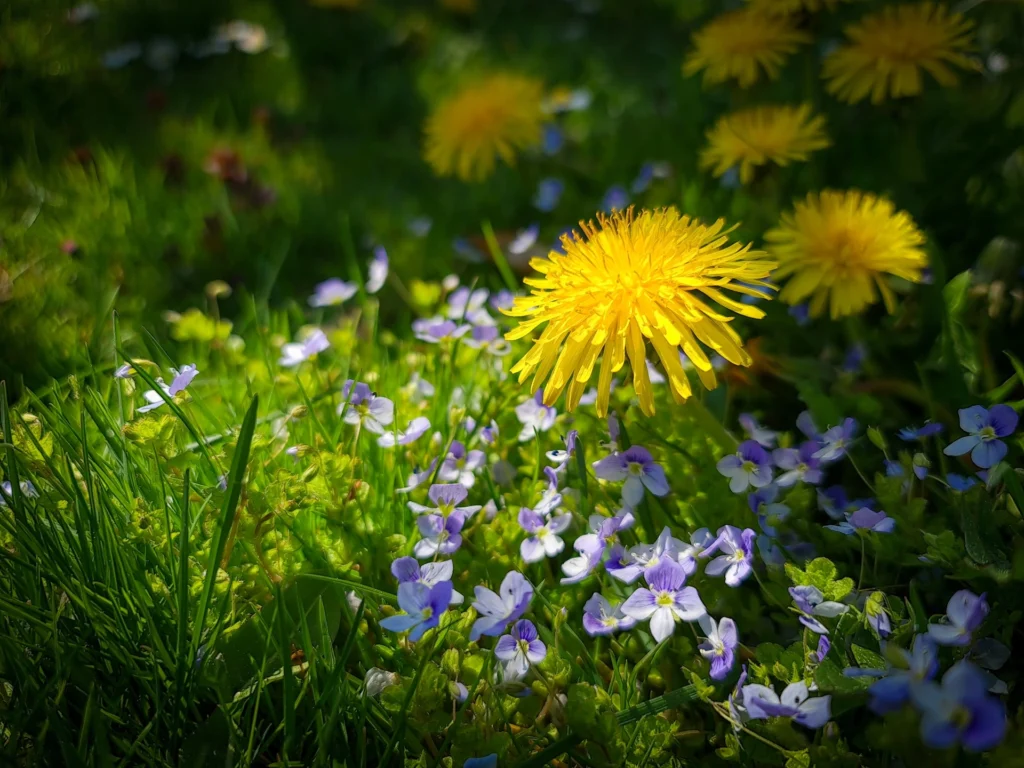The Dandelion is such a common plant and yet it’s meaning and benefits are so underrated.
If you’re looking for the meaning of the dandelion plant then check out this blog we’ll get into its various meanings, uses, history and benefits.
After reading this blog you will understand why the dandelion holds certain meanings and also why this modest plant is very powerful.
Dandelion Meaning
The Dandelion plant symbolises faithfulness, prosperity, happiness and wishing for love. The metaphysical beliefs surrounding the plant makes it a perfect companion for divination. The Dandelion also takes on the qualities of both the planet Jupiter and the Sun as alchemists place this plant under their dominion.
The Dandelion is such a fascinating plant that even the leaves and roots have meaning and uses.
When it comes to the Dandelion the myths, metaphysics and astrological correspondence all intertwine and fit with each other. Let’s get right into the astrological correspondence of the Dandelion and its meaning.
Sagittarius and Pisces birth flower
According to alchemy and astrology the dandelion falls under the dominion of the planet Jupiter.
Jupiter is the ruler of the zodiac Sagittarius. In old astrology Pisces was also under the rulership of the planet Jupiter.
However, in modern days the planet Neptune is the new ruler of Pisces.
The flowers that fall under the dominion of Jupiter are usually abundant which is one of the qualities of the planet.
The plants and flowers of Jupiter are usually sweet in taste but they can also be bitter which promotes digestive functions.
Another sign that plant or flower is under the dominion of Jupiter is that the first flower tend to be yellow something again mirrors the process of digestion and the liver.
From Greek mythology we know that of all the gods who presided over oracles and divinations , Jupiter was the most eminent one.
Hence, the plant is a birth flower of both zodiacs. If you wish to gift Dandelions then both your Sagittarian and Piscean friends would most likely enjoy them.
Leo Birth flower
The common name dandelion comes from Latin, dens leonis however, the Dandelion might derive its name from the French Dent de Lion or Lion’s tooth. The flower bears a similar name across nearly all European languages.
It was perhaps due to the whiteness of the root or the golden hue of the flower which was a reminder of the golden teeth of a lion.
Additionally, the jagged leaf of the plant resembled the lion’s tooth.
The lion and the sun are synonymous. All plants resembling the lion would be under the dominion of the Sun.
And the dandelion certainly had the appearance of the sun or it was very similar to ancient representations of the sun.
Additionally, the prosperous and happiness aspect of the Dandelion plant are highly related to the qualities of the Sun and the Leo zodiac.
Dandelion meaning in mythology
The myths surrounding the dandelion provide a lot of insight into the flower’s symbolism. The Dandelion meaning and beliefs vary from myths and culture however, some of those meanings also carry forward into history.
Let’s have a look at what various meanings does this plant have in mythology.
Celtic Mythology
In Celtic mythology the dandelion meaning was linked to the goddess of spring Brigid.
Some scholars connects the goddess Brigid to Bridestones or the sandstones used in the construction of the Stonehenge.
This suggested that the goddess might have been a goddess in Neolithic or pre-Celtic times.
The goddess Brigid was the daughter of the god Dagda and he was often thought as the equivalent of Jupiter.
She was also the Celtic goddess of midwifery and healing. Moreover, she was the patron of smiths and the inspiration for poets. Finally, she was also a protector to women and children.
Her flower was the dandelion and another symbol that symbolised her was the serpent.

Greek Mythology
In Greek Mythology the story of Theseus and the dandelion meaning came through the goddess Hecate.
The goddess Hecate is a very complex goddess however, her role would later associate her to the phases of the moon, witchcraft and magic.
The dandelion is a sacred plant to Hecate and she fed Theseus the plant for thirty days before he went to battle hand-to-hand the Minotaur.
The phases of the moon are also symbolical of the maiden and the crone which is also another aspect of Hecate.
Therefore, on Samhain (now Halloween) the goddess becomes the Crone as the veil between worlds thins. Dandelions are one of the plants is directly related to Halloween.

Beliefs linked to Dandelion
There are various beliefs that surrounds the dandelion and it also contributes further to the meaning of the flower.
Using Dandelions as Love Oracles
- A belief that children had linked to the dandelion globe was to ask at which age they would get married.
- In Côte-du-Nord they would ask how many children would they have.
- Another form of divination with the dandelion was to assign each puff off the seeds to the letter of the alphabet. And the letter in which the blowing would then end as the initial of the person they would marry.
- If you were separated from a loved one then you would carefully take one of the heads then imagine the feather being charged with thoughts of love then turn in the direction where your loved one was and blow the seed in that direction to send your message.
- If you wanted to know if a loved one was thinking about you then you would blow on the dandelion and if there were one stalk left then you would know you were not forgotten.
- In dream interpretations to dream of dandelions meant misfortune. However, if a girl wanted to dream of her future husband then she could do so by putting a dandelion leaf under her pillow.

The divinatory uses of dandelions
- Children used the dandelion as barometers. When the seeds heads were fluffy then the weather would be fine. However, if the seeds head were limp and contracted then it meant it would rain.
- Sometimes the Dandelions were also called Clock-flower as it was believed that you could tell time with the flower.
- The Dandelion plant was also called the rustic oracle. It was because the flower would always open at 5 am and shut at around 8 pm. This would serve as a clock for shepherds.
- In Brittany’s Beaucé they would use it to know how many years would they live.
- The children from America would blow on a dandelion three times and if all the seeds blow away then it was a sign that their mother didn’t want them.
- When they would blow on the seeds and the direction in which the seed would fly would be the direction in which they would seek their fortune.
- And finally in Kentucky they would inquire about the number of days they would get whipped.
Dandelion roots uses
The benefits of the dandelion roots were famous. However, not many knew that the root would give a red dye. Let’s get into the various uses and benefits of the dandelion root.
The dandelion root was included with bitter Passover herbs. The larger leaves tend to be bitter and it was recommended to macerate the leaves in order to get rid of the bitterness.
Several drinks were made with Dandelion roots such as coffee and wine. The Fen people in the region of eastern England would collect dandelions in order to make wine on May Day.
The extract from the dandelion roots was bitter but this bitterness had very potent medicinal values. It worked very well on the liver.
In Scottish regions it was a way to treat anemia and other skin problems. By making a tonic from it and using its rich iron and copper nutrients. This was also something used in Ireland in addition, they would add nettle leaves.
Those treatments were also very popular in Welsh medicine and they were recorded in the early 19th century.

Dandelion leaves uses
- The Meskwaki tribe of Native Indians cooked the Dandelions leaves with pork. While the Menomini tribe cooked then with vinegar and sap from the maple tree.
- As a cure for indisgestion in Essex, they would put the dandelion juice on the tip of their tongue.
- The Dandelion plant also possessed diuretic properties as recorded in Europe. There was also a common name well known across Europe to describe the process “Pissabed” or “Pissenlit” in French. While the Germans refered to it as “Pissblume” and the Dutch “beddepissers”.
- In Ireland they would brew the leaves or even the whole plant including roots. This brew was then used to increase the flow or urine but also treat gallstones, jaundice and also stones in the bladder.
- The milk of the stalks were applied to pimples and spots. When the flower was boiled for half an hour in water, it would give a toilet water to get rid of freckles on the face. However, this was detrimental when applied too often. In some parts of France when the dandelion water would be overused they were said to bear sickly children or be very pale in complexion.
- The juice of the Dandelion was also applied on warts to treat them. They would also rub the leaves itself. In Somerset the dandelion leaves would be rubbed on nettle stings in combination with dock leaves.
- Another Irish remedy included bathing a stye with the milky juice of the dandelion plant.
- In Cumbria there was the most simplistic practice to help aid with rheumatism and it was to eat dandelion leaves. The young leaves however were not. They were instead used in salads.
Dandelion benefits
While the Greeks and Romans used the dandelion plant for its medicinal purposes, the first reference to the plant was found in a medieval Arabic text dating from around 1100 CE.
An ancient spring tradition in European cultures which would eventually follow into the New World was to go out early in spring and pick Dandelion greens.
Those leaves that were picked served as a tonic to cure people of the diseases that they might have got during the colder months.

The dandelion is a very nutritious plant and it contains a wealth of vitamins and other nutritional benefits:
- Vitamin C (more vitamin C per pound than tomatoes and oranges)
- Protein
- Iron
- Thiamine
- Riboflavin
- Calcium
- Potassium
- Vitamin D
- Vitamin K
- B-Complex
The Dandelion plant was also used to treat a variety of conditions specially where it was necessary to remove excess of fluid from the body without losing nutrients.
It has been used to treat:
- pulmonary edema
- gallbladder problems
- kidney stones
- gout
The plant had a place in the official listings of medicines and drugs of many countries due to its medicinal properties.
Dandelion tea health benefits
The dandelion tea was used a liver medicine and it was also the case for the dandelion coffee.
The roots used to make the tea and coffee are gathered in autumn rather than in spring because they are flavourless.
Both the tea and the coffee are said to be excellent for indigestion.
In Alabama people used the dandelion tea for biliousness in a similar way the people of Suffolk used it for any kind of stomach pain.
The recorded use of dandelion in Ireland is extensive. They used the dandelion tea for asthma. They would also chew on the leaves then swallow the juice to “clear” the chest.
History of Dandelion in America
The Dandelion plant was in the United States Pharmacopeia from 1831 until 1926 and it was also listed in the U.S. National Formulary from 1881 until 1965.
The Dandelion seeds entered the United States around 1620. It was transported on the Mayflower along with the Puritan settlers.
Some of the dandelion seeds were part of the Puritan women’s medicine chest. As all the part of the dandelion from its flower to its roots was well known and recorded as a remedy for various ailments.
The dandelion was also a very comforting reminder of England for the people who entered into the New World.
In 1672, while reporting back on his botanical survey of the New England, John Josselyn wrote that the dandelions were well established.
The Spanish on the other hand brought dandelion plants and seeds to their settlements in California and also in Mexico.
The French were also importing the dandelion plant into Canada.
By the 19th century in the New World, the dandelion were still very popular and they served not just as a medicinal herb but also as means of nutritious food.
There were many of varieties of the dandelion plant developed by Horticulturalists. This also included the popular Large-Leaved Dandelion plant. The Dandelion wine was very famous back then but also the tea and the salads.
However, during the late 20th century the dandelion were no longer a favourite plant.
The availability of other forms of green that were less bitter made it slowly disappear from the grocery store shelves. The iceberg lettuce would be one of the greens to replace it.
You can still find the dandelion plant in health stores, gardens and lawns throughout the country.
Unlike many other non-native plants introduced in USA the dandelion poses no real threat to the environment.
Although the dandelion plant classifies an invasive plant, it is not a major threat in terms of invasion. Dandelions are not one of the most disliked plants.
If you enjoyed our post on Dandelion then other flowers and plants that fall under the dominion of Jupiter or the Sun might also interest you.
FAQ Dandelion Plant
References
Cumo, C. (Ed.). (2013). Encyclopedia of Cultivated Plants [3 volumes]: From Acacia to Zinnia. ABC-CLIO.
Dietz, S. T. (2022). The complete language of flowers the complete language of flowers: A definitive and illustrated history – pocket edition. Wellfleet Press.
Junius, M. M. (1986). Practical handbook of plant alchemy: How to prepare medicinal essences, tinctures and elixirs. Inner Traditions Bear and Company.
Thiselton Dyer, T. F. (1994). Folklore of Plants. Llanerch Press.
Watts, D., & Watts, D. C. (2007). Dictionary of Plant Lore. Academic Press.
Deena Bsingh, a UK-born, Mauritius-raised content writer, is a dedicated explorer of the ancient world’s hidden treasures. Armed with classical studies knowledge and a decade of spiritual immersion, Deena delves deep into the wellspring of ancient wisdom. Her illuminating writings on flower meanings and culinary history are imbued with the profound insights she has gathered on her journey. Through her Medium articles, she guides readers on transformative journeys that bridge the gap between ancient cultures and contemporary consciousness, offering a rich tapestry of understanding that endures through time.

